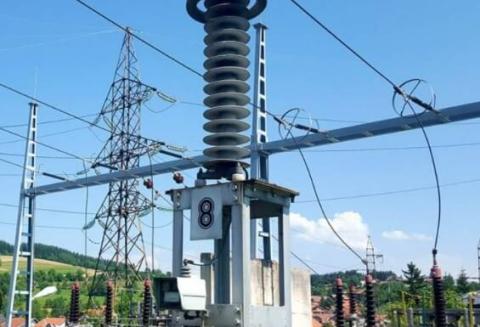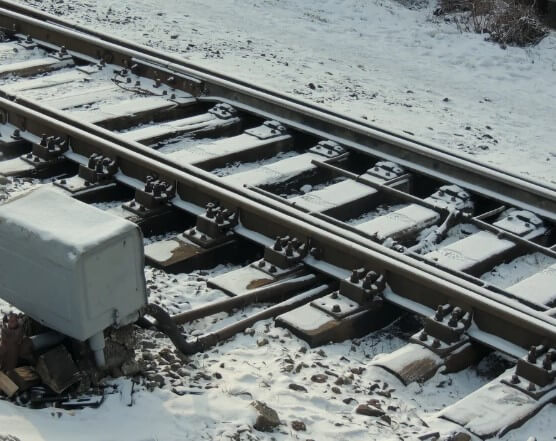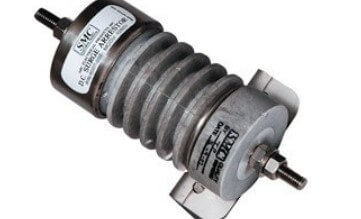
Rail networks are the arteries of industrial progress—moving people, goods, and critical supplies every day with precision and speed. But as reliable as these systems are, they’re not immune to the unpredictable force of nature or electrical anomalies. Behind the scenes, electrical systems form the backbone of rail infrastructure, and without adequate protection—particularly from power surges—the consequences can be disruptive, expensive, and even dangerous.
At Swartz Engineering, we’ve seen firsthand how the absence of Surge Arrestors leads to some of the most preventable failures in rail systems. In this blog, we explore the most common breakdowns that occur when surge protection is missing and why every modern rail network needs robust surge mitigation solutions.
1. Signal System Failures
Railway signaling is the silent communicator on the tracks—controlling traffic, avoiding collisions, and ensuring smooth operations. Yet, this system is incredibly sensitive to voltage surges caused by lightning strikes, switching operations, or even inductive coupling from nearby high-voltage lines.
Without Surge Arrestors, a sudden voltage spike can damage or fry sensitive components in the signal relays or interlocking systems. This leads to:
- Missed or incorrect signal indications
- Service delays and stoppages
- Compromised passenger safety
In worst-case scenarios, an unprotected signal system can result in derailments or train collisions due to miscommunication between track elements.
2. Communication System Disruptions
Modern railways depend on reliable communication for everything—from train dispatch to maintenance alerts. Fiber optics, radio links, and wired intercoms are critical, but they’re also prone to damage from transient overvoltages.
When Surge Arrestors are not installed to protect communication hubs, surges can destroy switches, routers, and transmission equipment. This may cause:
- Loss of contact between control centers and trains
- Failure of real-time monitoring systems
- Downtime in centralized control operations
At Swartz Engineering, we emphasize not just functional efficiency, but communication resilience—because being offline in a rail environment is not an option.
3. Power Supply Equipment Damage
Train networks consume massive amounts of power. This is especially true for electric trains, trackside equipment, and station facilities. High voltage surges—whether from switching surges, nearby faults, or direct lightning hits—can cripple transformers, circuit breakers, and substations.
Rail systems lacking Surge Arrestors often face:
- Burned transformer windings
- Tripped breakers and prolonged outages
- Equipment overheating and arc faults
Repairing or replacing such power assets can cost thousands—if not millions—of dollars and force network operators into extended downtimes that affect both service quality and revenue.

GET IN TOUCH
In a hurry? Call us at 276-285-3841
4. Track Circuit Failures
Track circuits are the detection systems that identify train presence and position. These circuits are crucial for signaling, crossing safety, and train separation.
Without Surge Arrestors, transient voltages can infiltrate these circuits through rails acting as conductors, especially during thunderstorms. This results in:
- False occupancy detection
- Unexpected gate closures at level crossings
- Signal hold-up or failure to change indications
These malfunctions confuse both operators and onboard systems, compromising operational confidence.
5. Control Cabinet and Panel Damage
Control cabinets house the brains of the rail system: PLCs (programmable logic controllers), relays, timers, and contactors. These panels control signaling, lighting, ventilation, and gate systems across the railway network.
A single surge event—left unfiltered by Surge Arrestors—can melt delicate circuits, erase firmware, or cause short-circuiting inside the control panels. The result?
- High repair costs
- Reprogramming delays
- Service inconsistencies
Moreover, technicians often spend hours diagnosing the failure point, leading to operational paralysis while commuters wait.
6. Ticketing and Passenger Information System Outages
While they may seem like peripheral conveniences, passenger information systems and ticketing kiosks are integral to customer satisfaction and station management. These systems are often linked to cloud-based servers and electronic terminals that are highly sensitive to electrical spikes.
In stations without Surge Arrestors, these systems may:
- Crash during storms or local power issues
- Lose transactional data
- Fail to update real-time train schedules
This frustrates passengers and impacts operational transparency, especially in high-traffic urban rail stations.
7. Maintenance Downtime and Cost Overruns
Unplanned failures due to surge damage significantly increase maintenance burdens. A reactive maintenance culture—where teams are always rushing to fix what's broken—leads to high overtime pay, delayed repairs, and unnecessary component replacements.
Rail networks without Surge Arrestors are often caught in this loop, draining both time and budget resources. In contrast, a protected system sees fewer emergencies and more scheduled, efficient maintenance cycles.

GET IN TOUCH
In a hurry? Call us at 276-285-3841
Why Surge Arrestors Are the Silent Heroes
The beauty of Surge Arrestors lies in their invisibility when everything works. They quietly shunt harmful voltages to the ground, preserving the life of rail electronics and infrastructure. When used correctly, they:
- Prevent catastrophic equipment loss
- Protect data integrity
- Maintain network uptime
- Increase component lifespan
- Lower insurance and repair costs
At Swartz Engineering, we design surge protection strategies specific to rail infrastructure—covering power systems, control units, signaling pathways, and telecom lines. Our arrestors are engineered to meet the toughest IEC and IEEE standards, ensuring maximum uptime and safety.
Future-Proofing Rail Networks
Rail infrastructure is only getting more electrified and interconnected. With smart signaling, automated switches, and real-time passenger data becoming the norm, the need for comprehensive electrical protection is greater than ever.
Surge Arrestors are not just accessories—they’re essentials. Every rail operator, from city metros to long-haul freight lines, must invest in them to keep operations running smoothly and passengers safe.
Conclusion
The railway of the future isn’t just faster—it’s smarter and safer. But no level of technology can shield a system from surges unless it’s actively protected. If you operate or manage rail infrastructure, now is the time to assess your vulnerability. Contact Swartz Engineering for a customized Surge Arrestor assessment tailored to your environment. Don’t let an avoidable failure be the reason your network grinds to a halt.
Products We Offer
Swartz Engineering strives to provide top-quality products to achieve our customer's needs. Our products include:
- Type 76 DC Relay
- Type 82 DC Relay
- Swartz Engineering’s Type 64 Ground Relay
- Type 32 Reverse Current Relay
- Type 150 DC
- CSM Shield Monitor
- Metal Oxide Surge Arrestors
- Transducers
- MVIS SL Slim-line Contactor
- Fully-tested Power Control Rooms
- Swartz Engineering’s Portable Substations
For nearly half a century, we have proudly led the industry in ensuring safety and efficiency. Swartz Engineering is a trusted family-owned company dedicated to providing top-notch power distribution solutions for the electrical industry. Contact us today!
